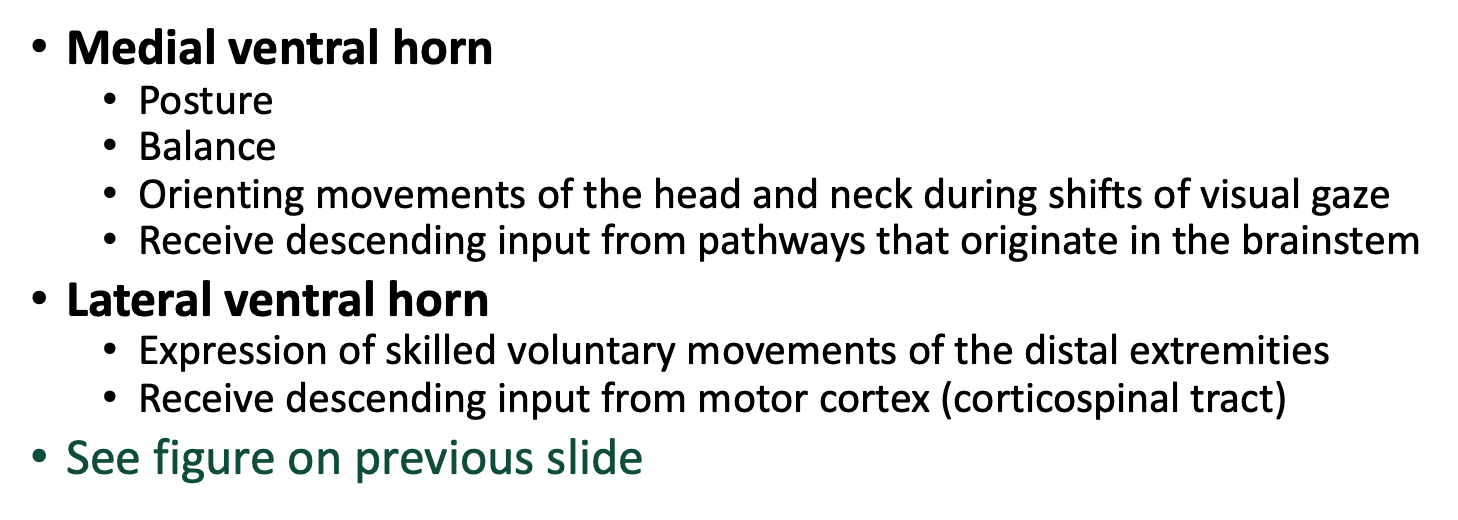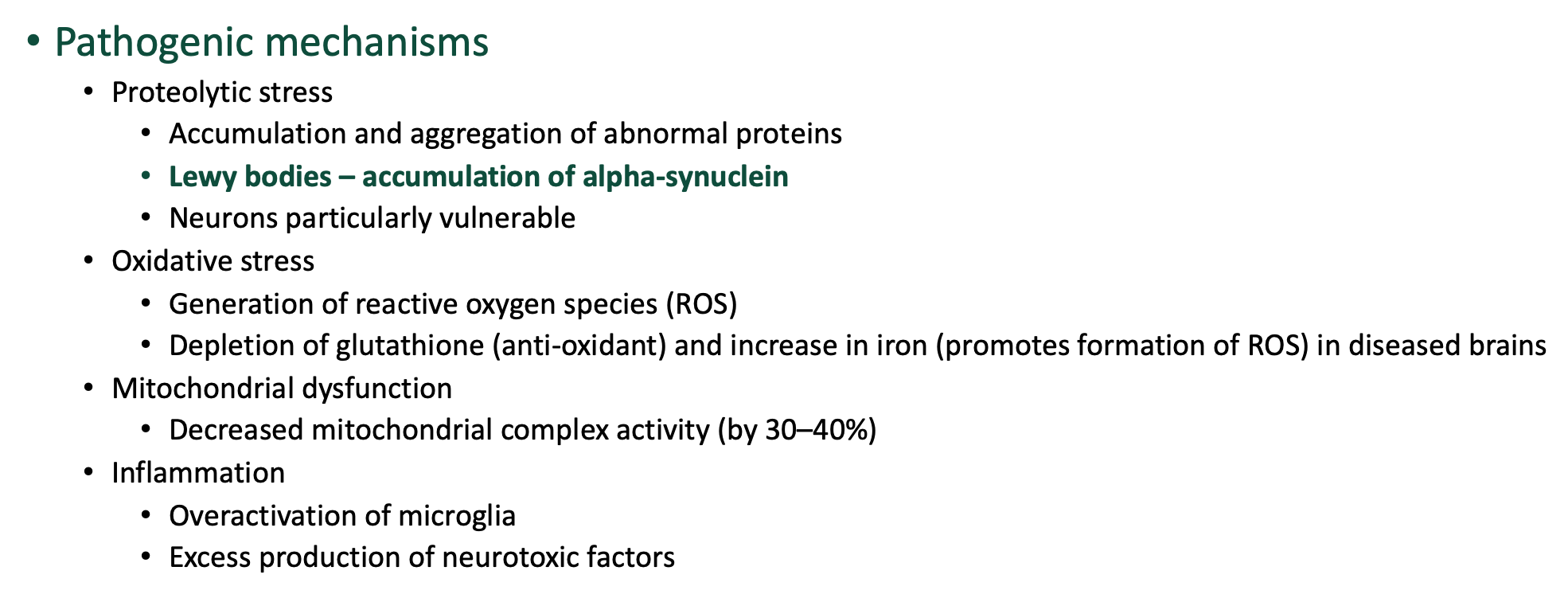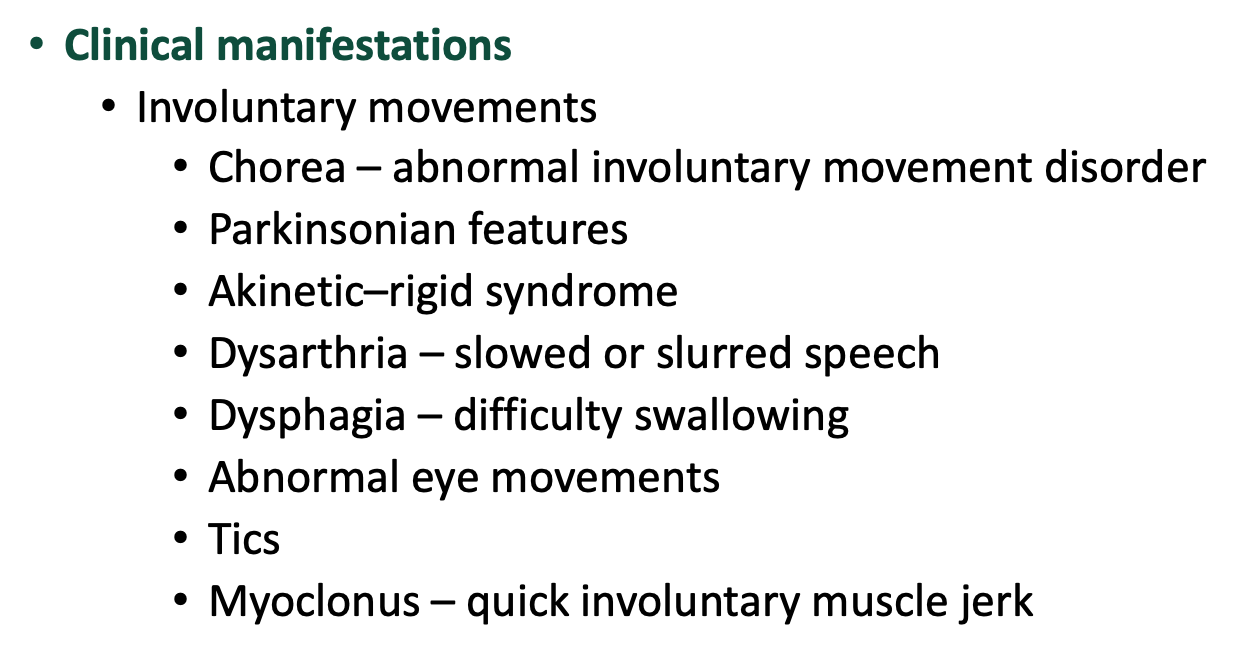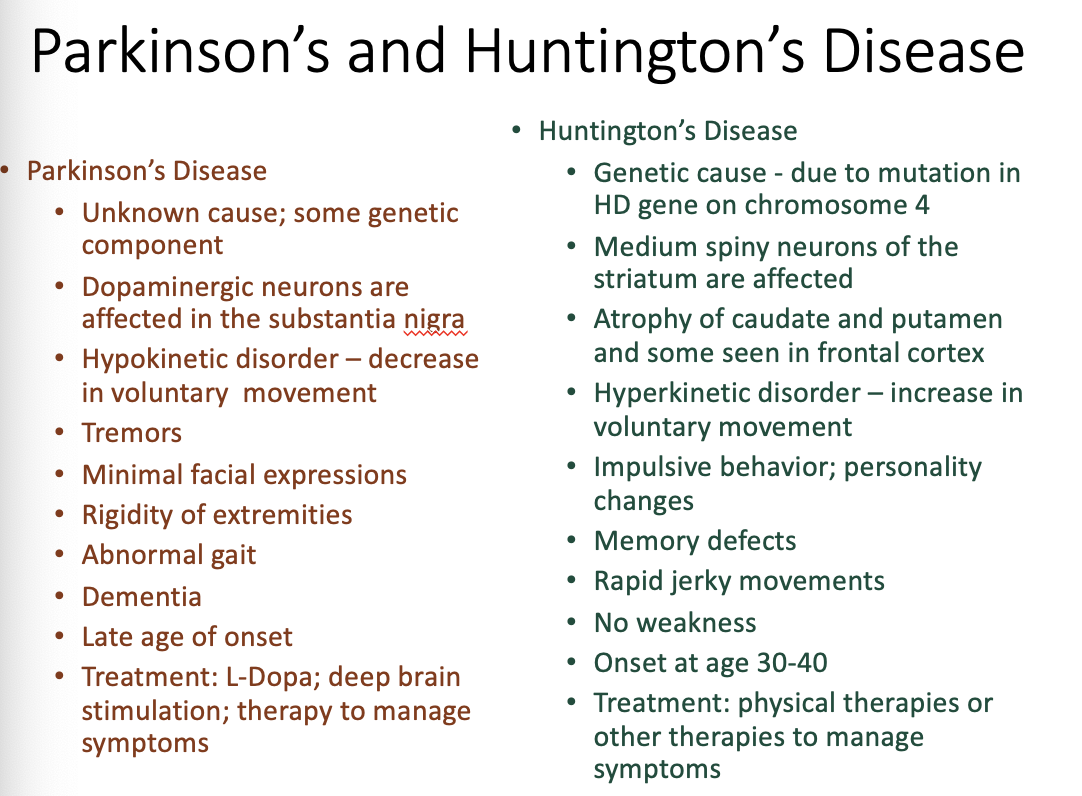ess cell bio - movement
1/18
There's no tags or description
Looks like no tags are added yet.
Name | Mastery | Learn | Test | Matching | Spaced |
|---|
No study sessions yet.
19 Terms
lower motor neurons
•“Lower” motor neurons – neurons in the spinal cord and brainstem that initiate skeletal muscle contraction
•Cell bodies located in the ventral horn of the spinal cord and in the motor nuclei of the cranial nerves of the brainstem
•Send axons directly to skeletal muscles
•Spatial and temporal patterns of activation are determined by local circuits
•Local circuit neurons receive input from sensory neurons
•Sensory-motor reflexes
•Rhythmical and stereotyped behavior

upper motor neurons
•“Upper” motor neurons – modulate the activity of “lower” motor neurons by influencing local circuitry
•Cell bodies located in brainstem centers – vestibular nuclei, superior colliculus, reticular formation, also the cerebral cortex; initiate and guide a wide variety of involuntary and voluntary movements
local circuitry within the gray matter of the spinal cord and the tegmentum of the brain stem
•“final common path” for initiating movement
•Lower motor neurons and local circuit neurons

1.Upper motor neurons with cell bodies in the brainstem or cortex
•Essential for the initiation of voluntary movements and for complex spatiotemporal sequences of skilled movements
•Cortical areas in the frontal lobe (primary motor cortex) and premotor cortex are essential for planning, initiating, and directing sequences of voluntary movement
•Brain stem responsible for regulating muscle tone and orienting the eyes, head, and body in response to sensory stimuli; posture
cerebellum
.regulates the activity of upper neurons
•Detects and attenuates the difference between an intended movement and the movement actually performed (motor error)
•Coordinated control
basal ganglia
3.suppress unwanted movements and prepare upper motor neuron circuits for the initiation of movements
•Parkinson’s and Huntington’s Disease

central pattern generators
•Central pattern generators – capable of controlling the timing and coordination of complex patterns of movement

lower motor neuron syndrome
•Damage to lower neuron cell bodies or peripheral axons
•paralysis or paresis
•Loss of reflexes (areflexia)
•Loss of muscle tone
•Atrophy due to denervation and disuse
•Fibrillations – due to changes in the excitability of denervated muscle fibers
• Fasciculations – abnormal activity of injured motor neurons
•Fibrillations and fasciculations – clinical tool for diagnosis of lower motor neuron disorders
•ALS – Amyotrophic Lateral Sclerosis

Amyotrophic Lateral Sclerosis
•Neurodegenerative disease that affects about .05% of the population in the U.S.
•Slow degeneration of motor neurons in the ventral horn of the spinal cord and brain stem (lower motor neurons) and neurons in the motor cortex (upper motor neurons)
•Progressive weakness and wasting of the skeletal muscles
•Intellect remains intact

upper motor neurons
•Influence the generation of movements by modulating the activity of local circuits in the brainstem and spinal cord
•Sources of upper motor neuron pathways
•Brain stem centers
•Postural control, orientation toward sensory stimuli, locomotion
•Cortical areas
•Planning and precise control of complex sequences of voluntary movements
•Somatic expression of emotional states

descending motor control
•Medial ventral horn
•Posture
•Balance
•Orienting movements of the head and neck during shifts of visual gaze
•Receive descending input from pathways that originate in the brainstem
•Lateral ventral horn
•Expression of skilled voluntary movements of the distal extremities
•Receive descending input from motor cortex (corticospinal tract)
See figure on previous slide

motor control centers of brain stem
•Vestibular complex – regulates head position; balance
•Reticular formation – scattered clusters of neurons; difficult to subdivide anatomically
•Superior colliculus – output mediated through the reticular formation
•Controlling axial musculature in the neck
•Generating orienting movements of the head


modulation of movement by the basal ganglia
•Do not project directly to local circuit or lower motor neurons
•Regulate the activity of upper motor neurons
•Large, functionally diverse set of nuclei
•Motor function
•Caudate
•Putamen (together form the corpus striatum)
•Globus pallidus
•Substantia nigra
•Subthalamic nucleus
•All of the structures above form a subcortical loop that links most areas of the cortex with upper motor neurons in the primary and premotor cortices and brainstem
•Influences of these structures on upper motor neurons are required for the normal performance of voluntary movements
•When one of these components is compromised, the motor systems cannot switch smoothly between commands that initiate and maintain movement and those that terminate movement

parkinson disease
•Idiopathic, chronic, progressive degenerative disorder of CNS
•Has motor, nonmotor, neuropsychiatric manifestations
•Affects individuals over age 50
•Second most common neurodegenerative disorder
•Parkinsonism symptoms
•Tremors
•Bradykinesia – movement slowed
•Rigidity
•Postural instability

pathogenic parkinson
•Pathogenic mechanisms
•Proteolytic stress
•Accumulation and aggregation of abnormal proteins
•Lewy bodies – accumulation of alpha-synuclein
•Neurons particularly vulnerable
•Oxidative stress
•Generation of reactive oxygen species (ROS)
•Depletion of glutathione (anti-oxidant) and increase in iron (promotes formation of ROS) in diseased brains
•Mitochondrial dysfunction
•Decreased mitochondrial complex activity (by 30–40%)
•Inflammation
•Overactivation of microglia
•Excess production of neurotoxic factors

pathology
•Gross atrophy in caudate nucleus and putamenaccompanied by selective neuronal loss and gliosis
•Neuronal loss in cerebral cortex
•Varying degrees of atrophy in other areas in midbrain and cerebellum
•Shrinkage of brain (in volume)
Numerous biochemical defects

huningtons disease symptoms
•Clinical manifestations
•Involuntary movements
•Chorea – abnormal involuntary movement disorder
•Parkinsonian features
•Akinetic–rigid syndrome
•Dysarthria – slowed or slurred speech
•Dysphagia – difficulty swallowing
•Abnormal eye movements
•Tics
•Myoclonus – quick involuntary muscle jerk

cerebellum
•Primary function is to detect the difference (motor error) between an intended movement and the actual movement – then influence upper motor neurons to reduce the error
•Corrections made during the course of the movement and as a form of motor learning
•Damage leads to persistent errors when executing movement

parkinson vs huningtons disease
s
